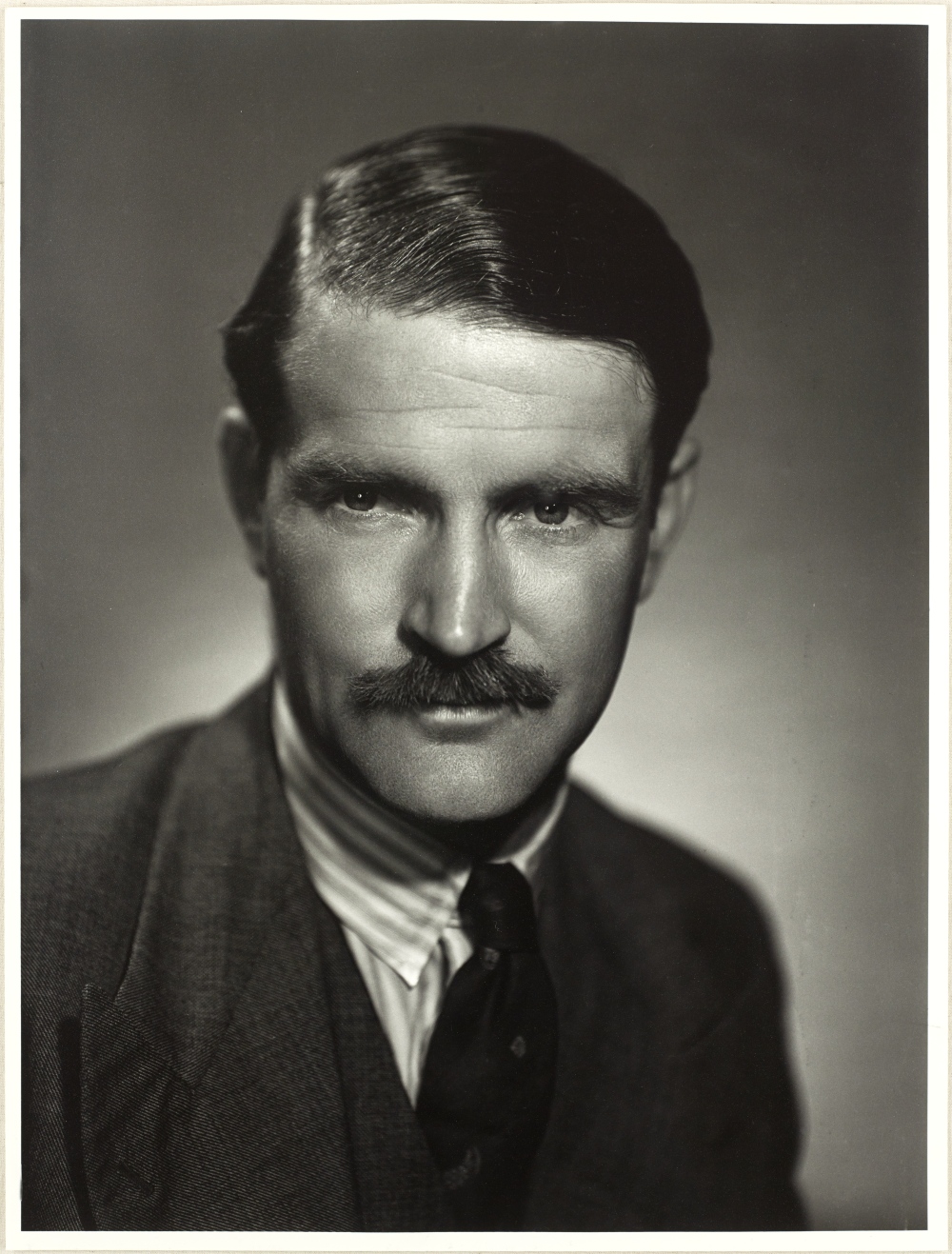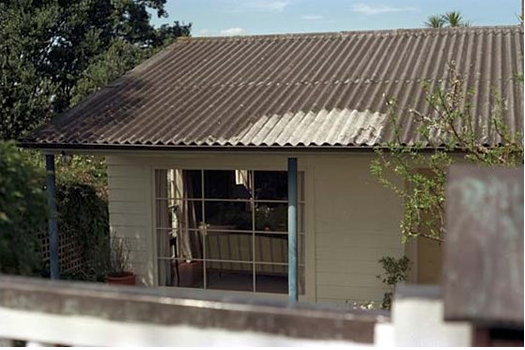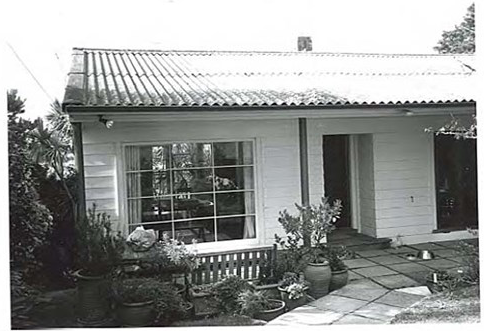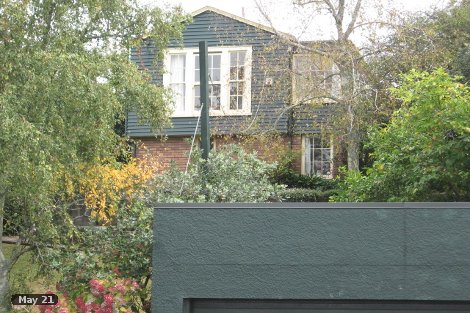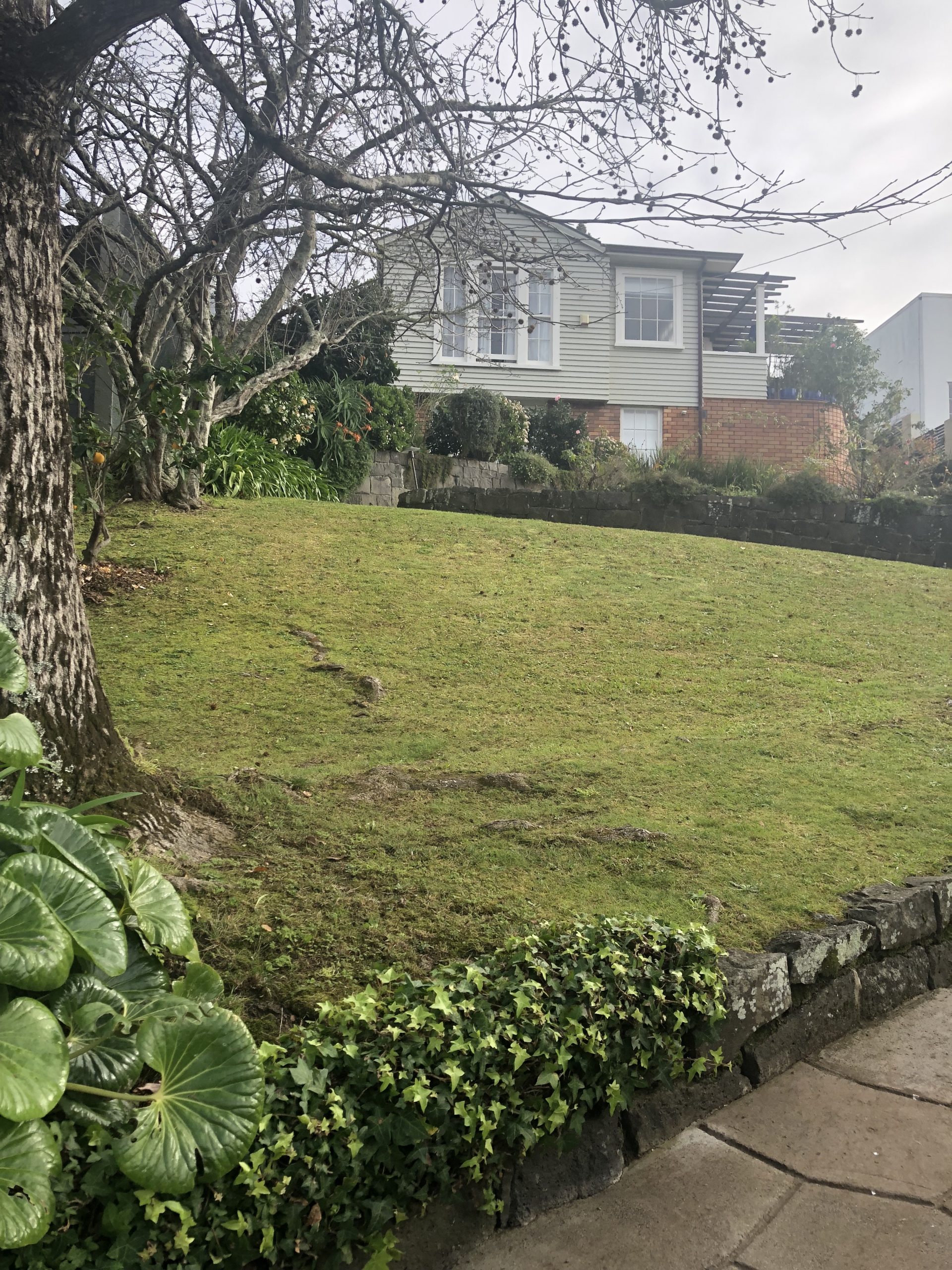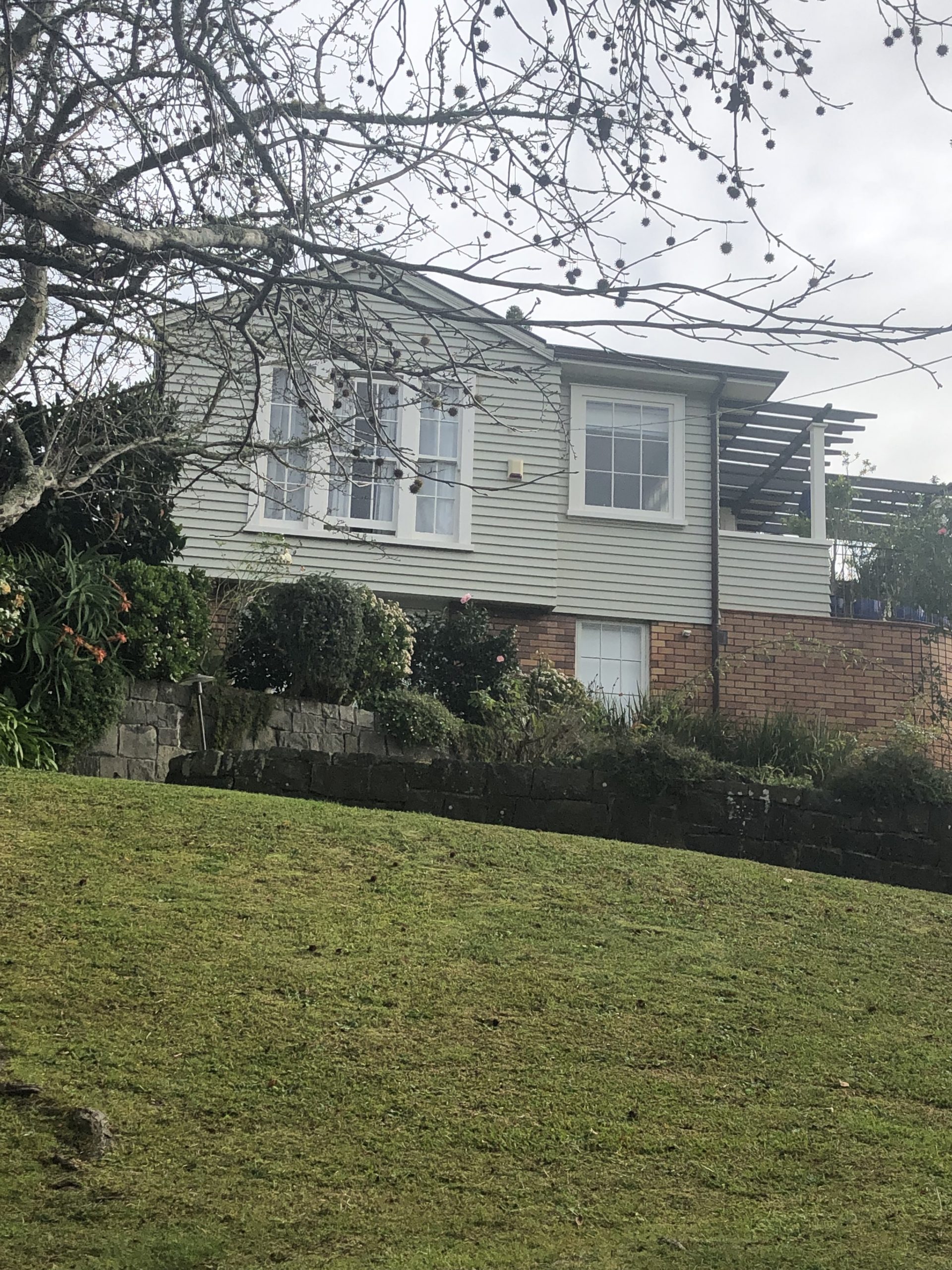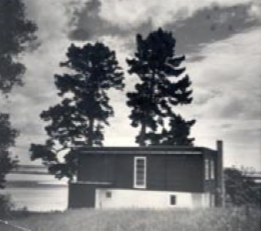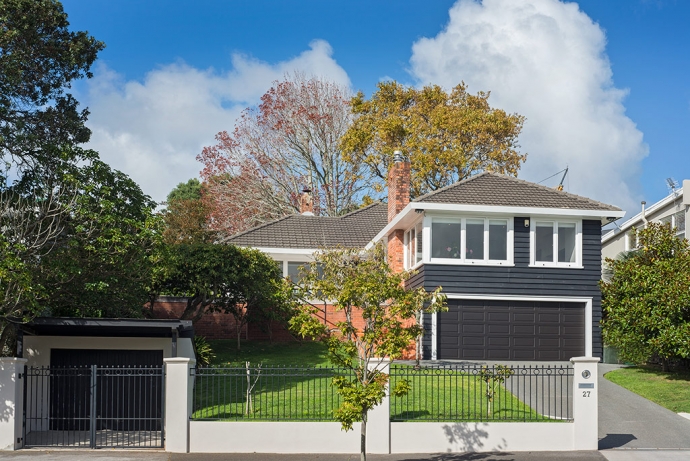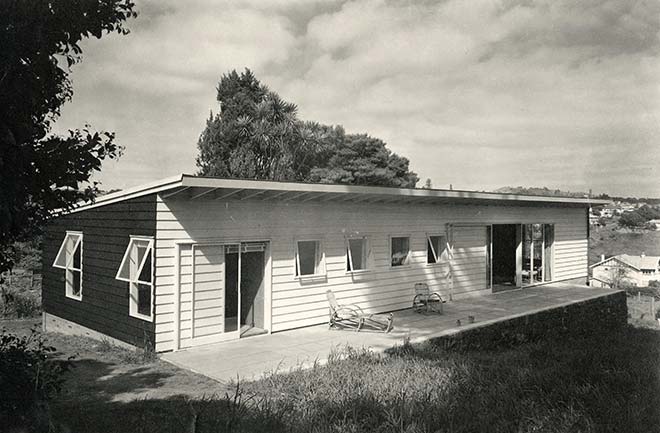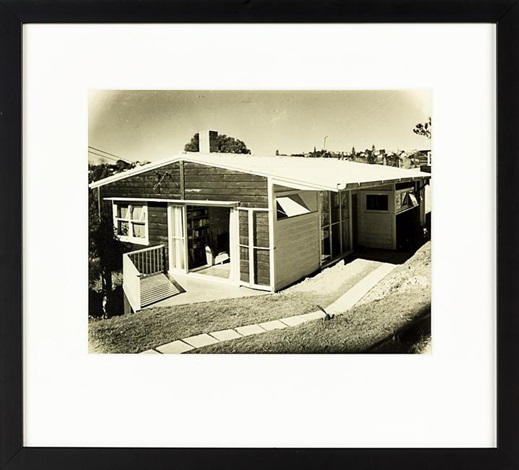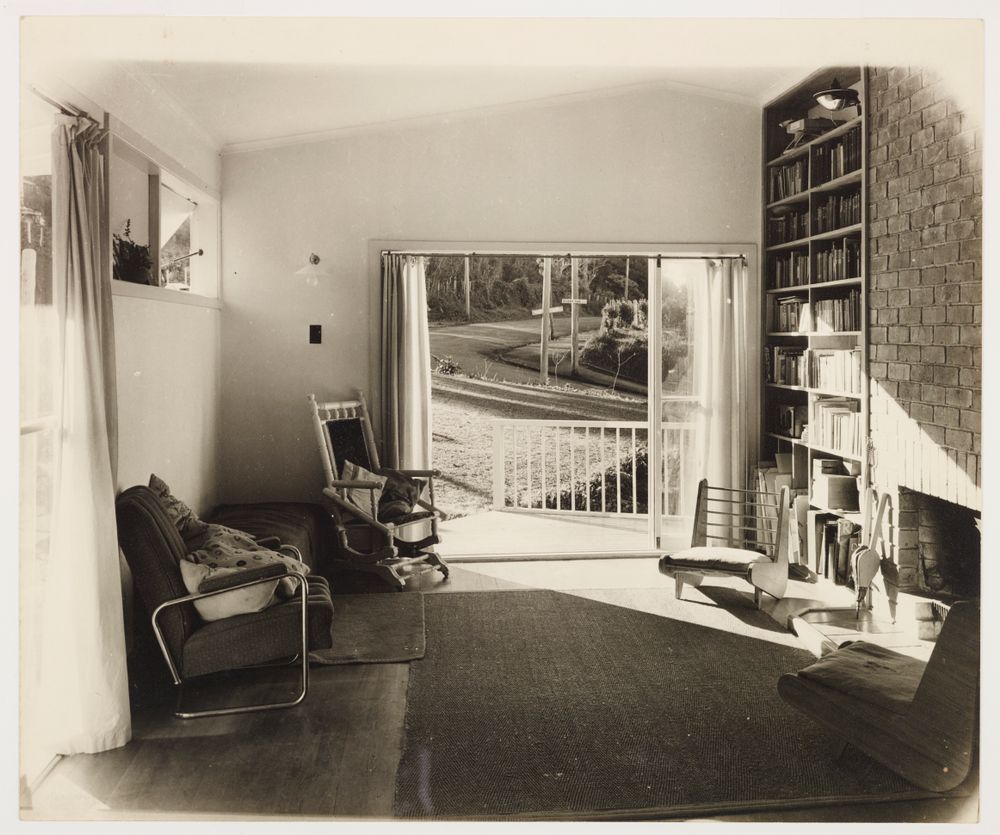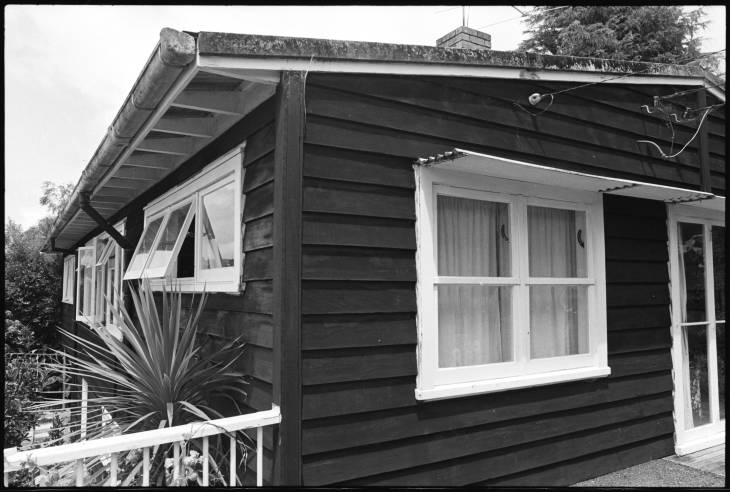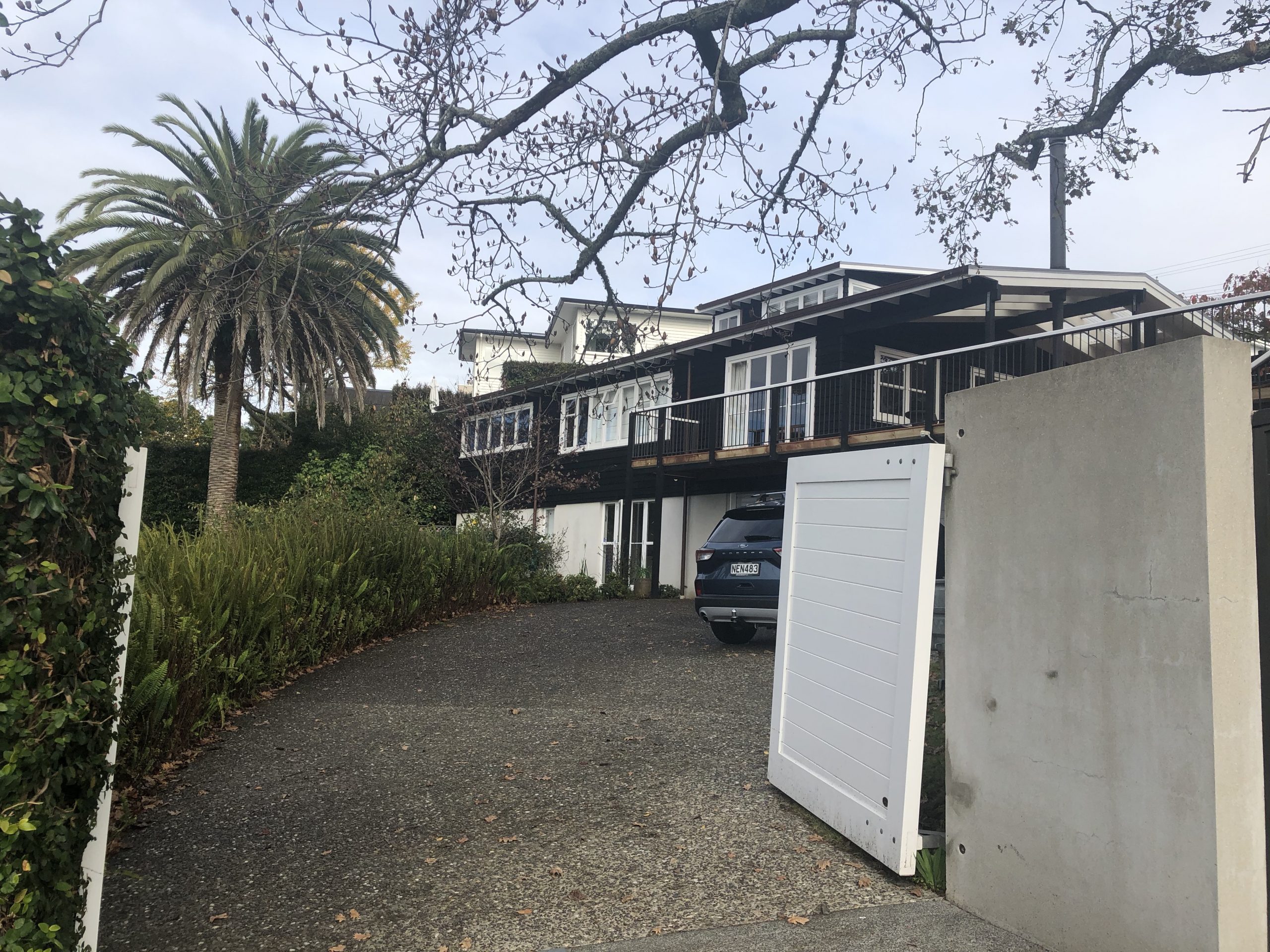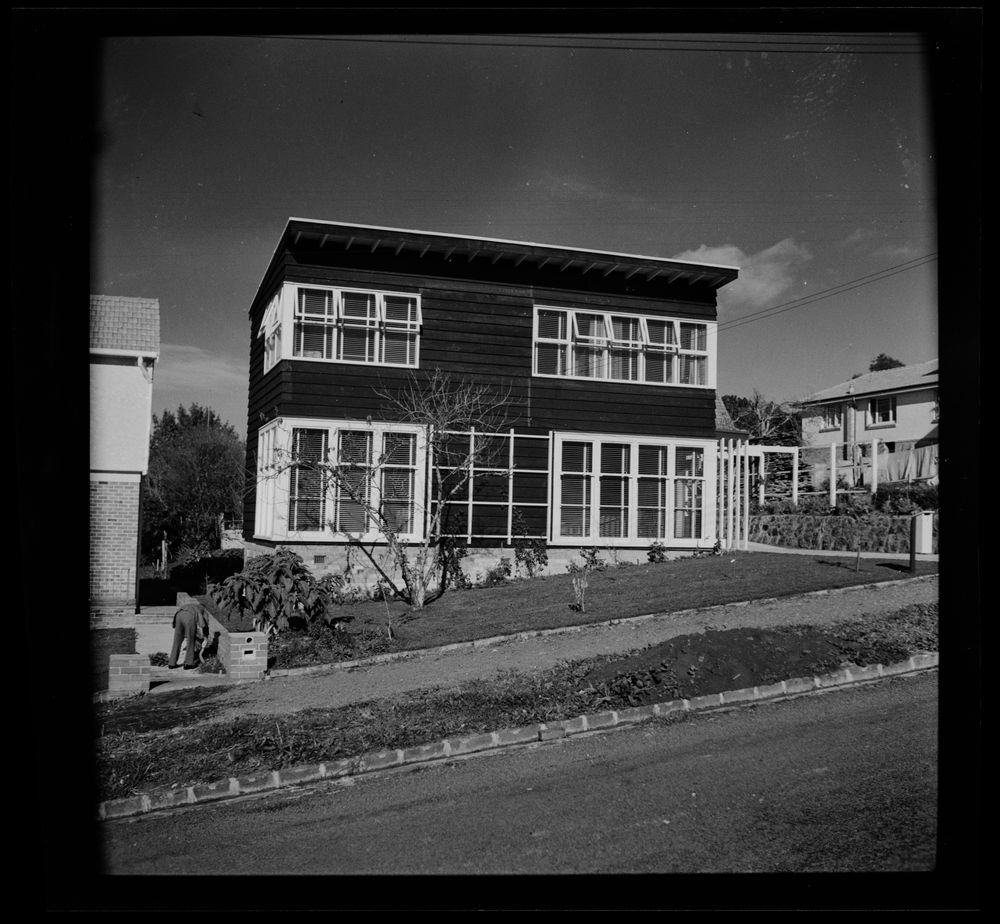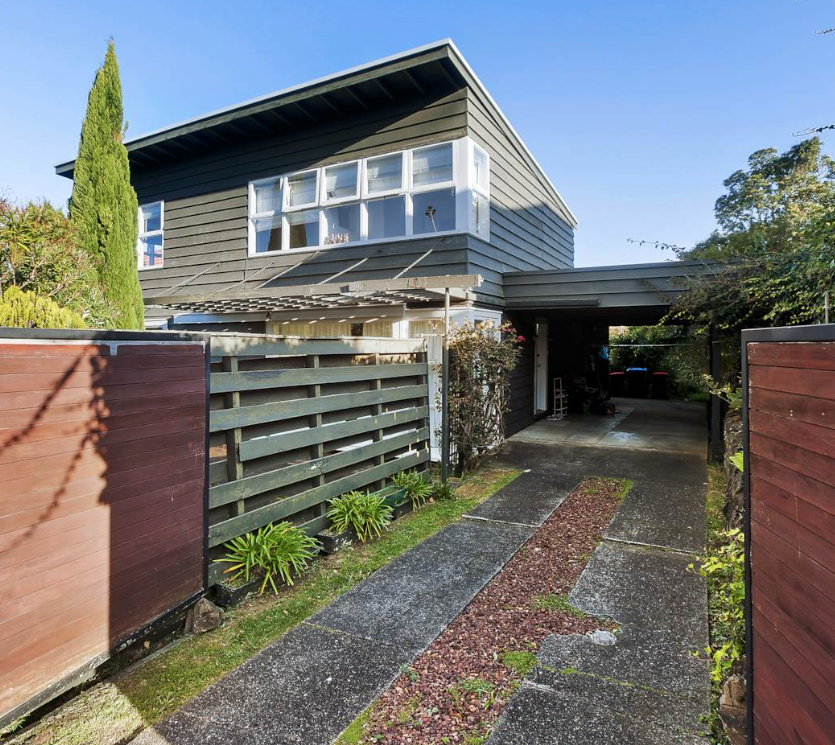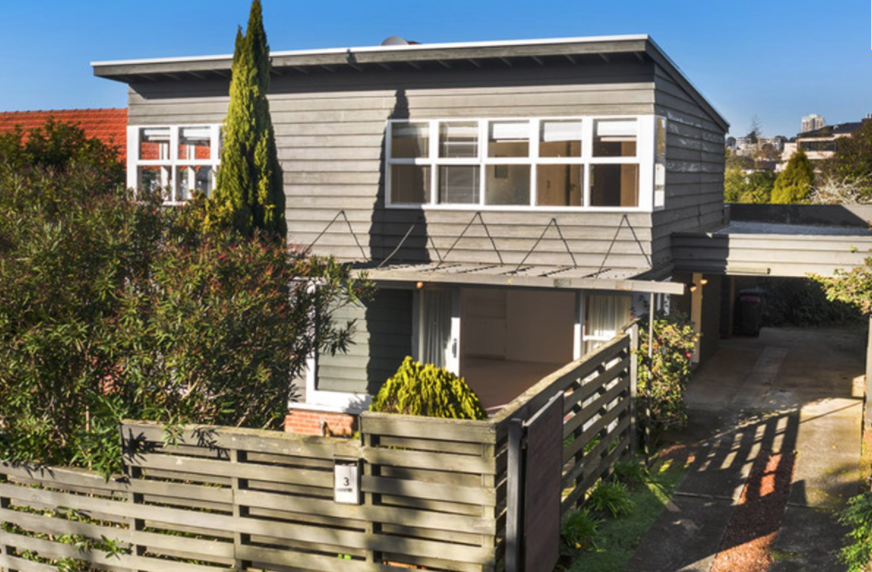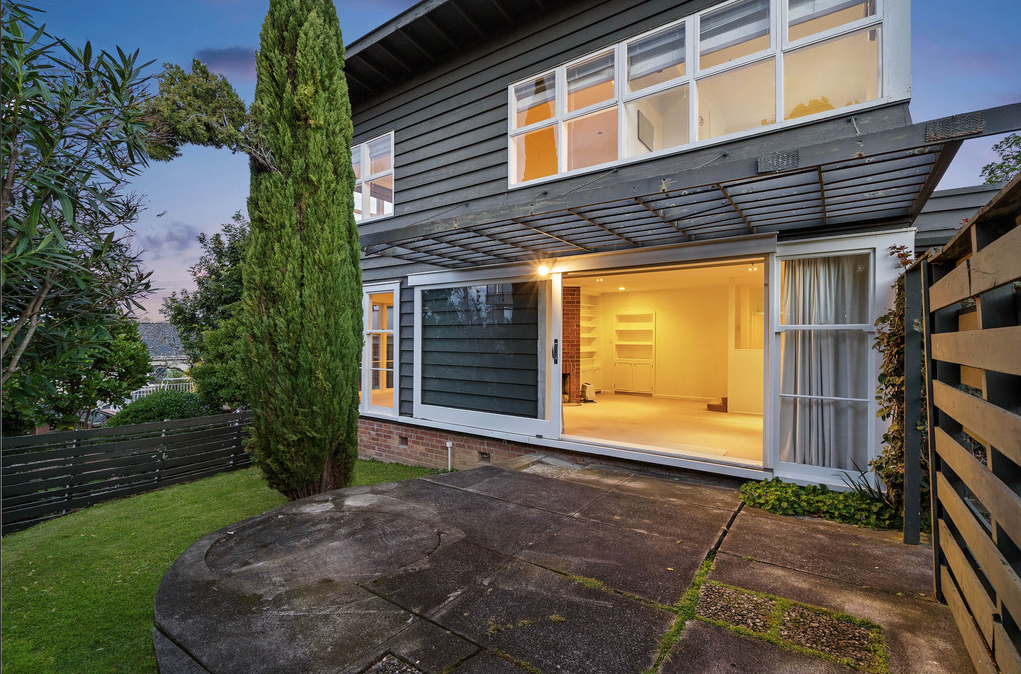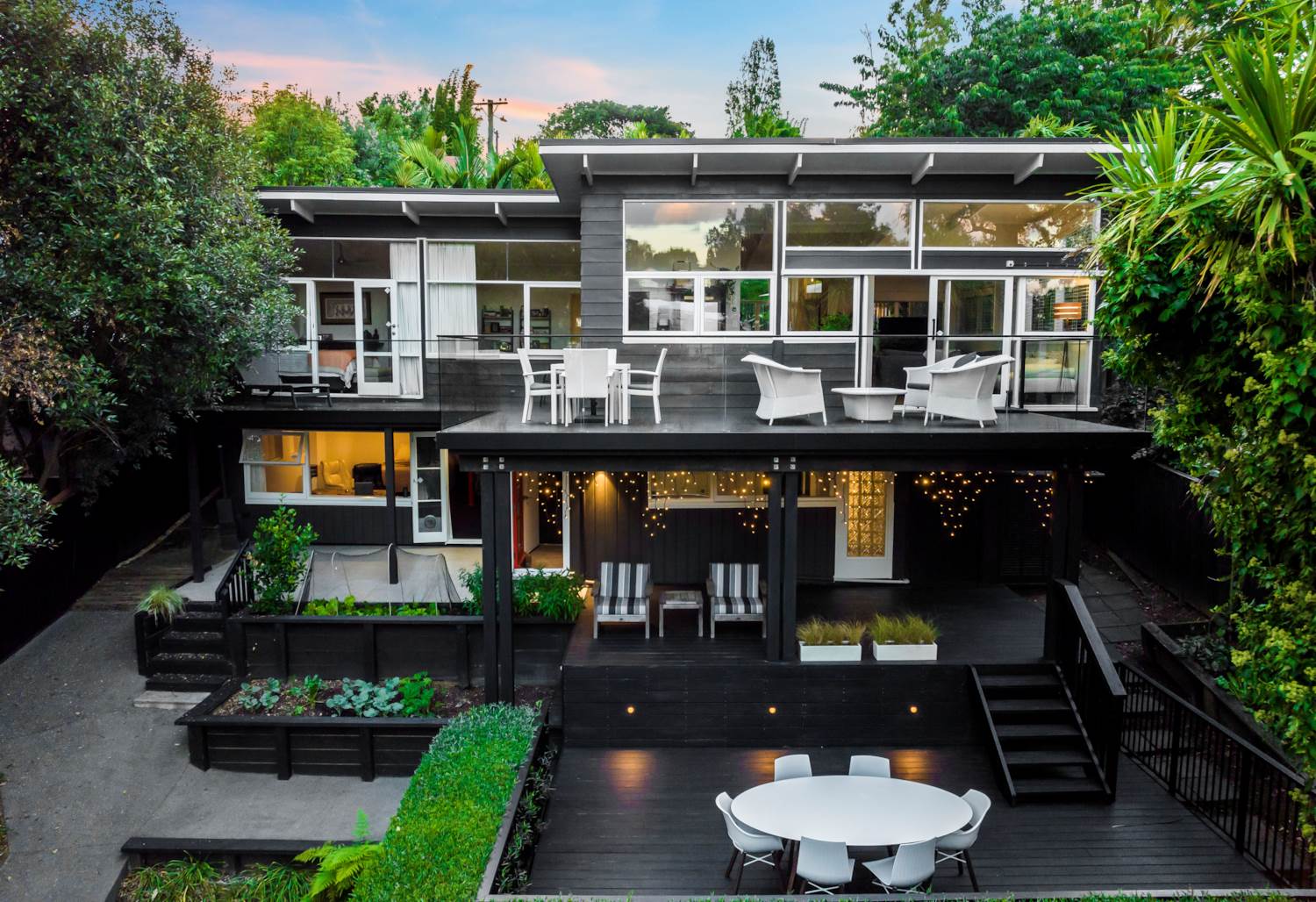Vernon Brown (Architects of Remuera)
Vernon Akitt Brown was born in Liverpool on 23 March 1905. He studied architecture at Northern Polytechnic in London, joining the Society of Architects by the age of nineteen in 1924. He emigrated to Auckland with his family in 1927, becoming an associate member of the Royal Institute of British Architects in 1930 and weathering the Depression to become a Registered Architect in 1937. [1, 2]
On 10 March 1937 he married Lesley Grey Waller in St Mark’s Church, Remuera.
Brown joined T.E. Norman Wade in practice in 1937, and had responsibility for the design of new premises for Caxton Printing Works in Federal Street, a fit-out for L.D. Nathan’s Shipping Office in Queen Street, and the Auckland Glass Company in Hobson Street.
Although he had commercial success, it was his domestic architecture that was to dominate his career.
Standing 1.8 metres tall, Vernon Brown had a significant presence in New Zealand design for over two decades. He achieved a national audience with his opinionated writing and broadcasts on modern design, with memorable aphorisms such as “The roof was low-pitched because there is no snow in Arney Road”, and railing against New Zealand’s obsession with houses dressed for the street view.
Brown was best known for his creosoted “Brown” boxes with white trim, described “as a coconut with a bite taken out”, although he never entirely abandoned the English Georgian idiom. Clients who wanted a traditional look got pastel weatherboards, shuttered casement windows and a pitched tiled roof. He was known for his economic and radical aesthetic in the form of spacious interiors, contained within a relatively small floor plan, to fill interior spaces with natural light and orienting the rooms to sun and garden. He consciously employed New Zealand materials in the construction of his buildings, notably timber weatherboards and, originally, a ‘Super six asbestos’ roof, since replaced by a standard corrugated asbestos roof.[1, 2, 3]
Winning the New Zealand Institute of Architects (NZIA) bronze medal for domestic architecture in 1940 was a professional endorsement of his significance in this field and he became a Studio instructor at the School of Architecture from August 1942 (promoted to lecturer in 1948), and continued his practice in partnership with Robin Simpson until the latter’s death in 1947. He was at the heart of Auckland society in the 1950s designing houses for many well-known arts and literary personages.
He designed a number of houses in Remuera, three houses for his own family, his successes reflected in the addresses on his homes: Bell Road, built in 1938, followed by Arney Road in 1939 and Victoria Avenue in 1941. [2] His home at 91 Arney Road is the only one of his houses to have a Historic Places Trust registration, awarded the NZIA Bronze Medal in 1940. [3] His most photographed house is at 75 Bell Road (corner Scherff and Bell Roads) referred to as the Hofmann House (owned/photographed by Frank Hofmann (1916-1989), built in 1946.
He was awarded another Bronze Medal for the Lemon House in St. Stephen’s Avenue in 1946, just one of around 70 domestic designs completed before his own early death at the age of 59 years in 1965. He closed his design office in 1954.
Vernon Brown was considered a pioneer in modern vernacular idiom and his work played a major role in the development of indigenous architecture in New Zealand [2], however few of Vernon Brown’s domestic designs have survived into the 21st century unscathed. Many of his more affluent clients hailed from the Eastern suburbs where the pressure of development supplanted with what he liked to describe as “unpretentious loaves of wholemeal bread with latter day ephemeral confections as insubstantial and overly sweet as sponge cake”.
VERNON BROWN’S REMUERA HOUSES (Detailed in: Tyler, Linda. Vernon Brown in Auckland, Itinerary no.8. Block Architecture Guides from the Broadsheet of the Auckland Branch of the NZIA.)
- 54 Bell Road (1938). Vernon Brown’s own house, built the year after his marriage. Although substantially altered it is still recognisable as being in his stripped Georgian style.
- 91 Arney Road (1939). Vernon Brown’s own house. Won the NZIA Bronze Medal for domestic architecture in 1940 and has a Category I Historic Places Trust listing.
- 334 Victoria Avenue (1941). Vernon Brown’s own house. The last house that Brown built for his family of five. Built on edge of Hobson Bay. Modified.
- A H Winter House, 27 Arney Crescent (1944). Renovated and updated, original features still remain.
- Edna Birkinshaw House, 250 Victoria Avenue (1945). Demolished.
- Hofmann House, 75 Bell Road (1946. Still in-situ.
- C. Tidmarsh House, 3 Sonia Avenue (1946). Still in-situ.
- 83 Ngapuhi Road, Remuera
